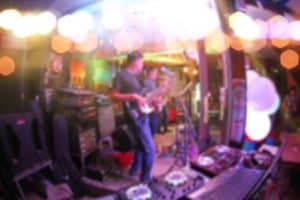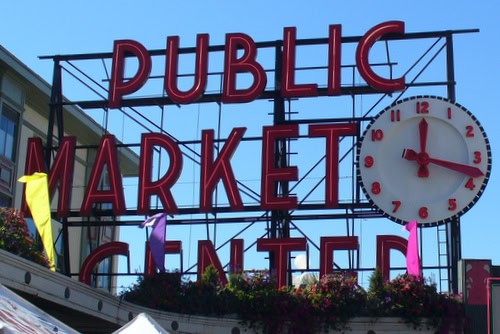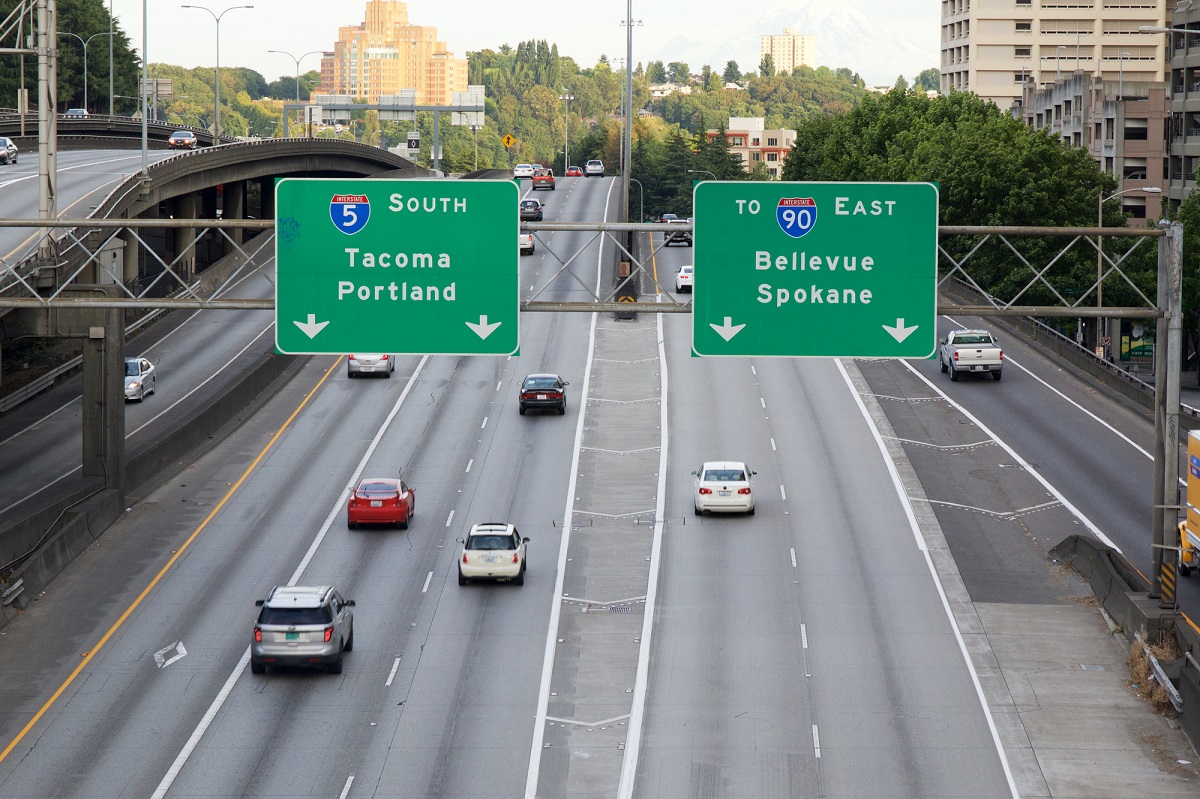If you are a bike rider, this is your one-stop site for information about riding in the Puget Sound region whether you are a pleasure seeker, commute daily to work, or are new to the Seattle-Tacoma metro area and need basic information about two-wheeled transportation. As with all the information at Greater Seattle on the Cheap, we focus on what’s free and cheap—the best value you can get without spending a fortune.
In the following sections, you’ll find bike trail maps, bike ride tracking apps, bike maintenance and safety information, and bike clubs around Washington State.
Free regional bike maps
Here’s a list of bike trail maps for the Puget Sound region and across Washington State.
- City of Seattle Bicycling Information includes bike maps, plus other information about bike riding in the city, such as parking and bikes on metro buses, ferries, and trains.
- Seattle Bicycle Club maintains a bike Maps Library on their website with many routes, including locations in Seattle as well as around Washington state.
- City of Bellevue provides bike information on their Choose Your Way website, including a Bellevue Bike Map and links to many other regional bike trail maps & guides, plus resources such as bike safety tips and bicycling clubs.
- City of Everett provide trail maps for walking, bicycling, hiking, and horseback riding.
- City of Redmond provides bicycling maps and other resources.
- City of Tacoma provides bike riding resources including a Pierce County Bike map.
- King County provides links to King County, Washington state, and other bike maps.
- Snohomish County Parks offers over 100 miles of trails for walking, jogging, or trotting, hiking or biking, skating or riding.
- Washington State Department of Transportation (WSDOT) provides information about bicycling in Washington, including commuting, bicycle helmet requirements, safety tips and other resources.
- Adventure Cycling Association is North America’s largest membership cycling organization. The non-profit offers trip-planning resources and bike-friendly maps throughout North America, including new Short Routes (adventurecycling.org). These two- to five-day bicycle routes are available free as Ride with GPS routes. Three routes are currently available in the Seattle area: Seattle to Fort Flagler (ferry across Elliott Bay to Fort Flagler on Bainbridge Island), Seattle to Kanasket-Palmer State Park (along the full length of the Cedar River Trail and loop back through the Green River Gorge), Seattle to Lopez Island (a four-day weekend trip, departing from Seattle via ferry to explore the San Juan Islands).
Free bike ride apps
There are a variety of technology solutions that can make it easier to plan, track, and analyze your bike riding adventures. Most apps offer free and paid versions.
The free versions are fine for all but the most serious competitors who want to track training issues.
The premium versions with enhanced features begin around $6 per month. You can get a discount if you pay the fee annually rather than monthly. More ardent bicyclists may also want to invest in a GPS tracking device such as Fitbit or Garmin. Basic models begin around $60.
The following biking apps are some of the most popular choices for planning and tracking bike rides. For the casual to frequent recreational rider, any of these will provide the data to make your rides more enjoyable and keep them interesting.
- Google Maps. Completely free on your desktop or smartphone. Enter a destination, then choose the bicycle icon and enter a starting point. You usually get several route options, each including distance, elevation, and estimated time. But you will need to manually track your riding statistics.
- MapMyRide. Choose or search for popular routes, create custom routes, and tracks your riding statistics and goals. Free, but requires registration. Get more features with paid version.
- Strava. Join for free to access popular routes or plan your own, track and analyze your bike ride statistics, plus get social sharing and safety location features. Free, but requires registration. Get more features with “Summit” paid version.
If you find yourself growing out of your smartphone app, you may want to make the jump to something more sophisticated, if your bike riding style or training need warrants it.
How to manually track your ride statistics
If you choose a bike route planning method that doesn’t track your ride statistics (such as Google maps), you can easily calculate your bike ride data manually.
After completing a planned ride, record in a notebook or spreadsheet the distance, elevation (reported by a map planner), and your total ride time.
From this information, you can calculate elevation gains, percentage, and riding pace using the following calculations (a spreadsheet formula comes in handy here):
- To calculate elevation gain per mile, divide the elevation gains by total ride distance (in miles) to get the elevation per mile. Modest elevation gains range from 25-50 feet elevation gain for every mile ridden, to strenuous rides at over 100-foot gains per mile.
- To calculate grade percentage, divide the total elevation gains by total miles in feet (1 mile=5,280 feet). Easier rides have a grade change of five percent or less, modest rides between 5%-10%, and strenuous rides over 10%.
- To calculate your average pace (miles per hour), simply divide the distance (total number of miles ridden) by the total ride time (be sure to subtract any time you stopped to take a break). Average bicycling speed is 12-14 mph. Some bicyclists never average more than 10-12 mph, and that’s perfectly fine.
How to increase your riding distance or difficulty
If you want to increase the distance of your rides, experienced bicyclists recommend you add another ride to your week, rather take one longer ride. For example, if you are already a weekend rider, try adding a weeknight ride or commute to work by bicycle one day a week.
Note that a 10 mile bike ride per week works out to a mere one-hour of riding time at a modest pace of 10 miles per hour. If you increase your total ride distance by two miles each week, you could be doing 100 miles within a year. That’s 10 hours per week, or less if you increase your pace. Likewise, you can set goals to increase elevation gains or pace.
Pace can be affected by the number of steep hills versus small rolling hills (indicated by elevation gain and grade percentage), and whether long uphill rides come early or late in the ride. Plus, other factors such as whether you are properly conditioned, fueled, and hydrated for your entire ride.
Of course, you don’t need to track any of your bike ride statistics and can simply stick with a comfortable weekly ride of 5 or 10 miles. Maintain whatever pace suits your biking riding skill, style, and most of all, your enjoyment of the sport.
Nothing wrong with that.
Bike maintenance & safety
It pays to be self-sufficient and ride safely.
Most cities and counties in the Puget Sound region require all bicyclists (regardless of age) to wear a helmet or risk being fined. Wearing a bicycle helmet greatly reduces the risk of severe head and brain injury, which account for more than 60% of bicycle-related deaths and bicycle-related hospital admissions.
The following resources can help you maintain your bike in good riding condition and to ride safely.
Bike maintenance
Routine maintenance and other minor adjustments keep you riding smoothly on the road or trail.
REI offers free classes on Bike Maintenance Basics at area stores. Classes fill up quickly, so sign up as early as possible to guarantee a spot. Check the availability or sign up at any Washington REI store near you.
Riding safely
Seven tips for riding safely:
- Wear a helmet that is in good condition and properly fitted.
- Avoid loose hair, garments, or straps that can catch on the bicycle or passing objects.
- Stay visible on every ride by wearing high visibility (yellow or orange) clothing.
- At dusk and after dark, use reflective gear and lights to ensure you can be seen.
- Obey all traffic laws, signs, and lights; act like a car.
- Use caution when sharing the road with vehicles and on sidewalks with pedestrians.
- Be alert when riding; watch both the terrain and your surroundings.
Find more safety information here:
- Bicycle Safety Overview from the U.S. DOT National Highway Traffic Safety Administration
- Rules of the Road from Seattle DOT
- Tips for Biking from Cascade Bicycle Club
- Summer Bike Safety from the National Safety Council
Helmet safety
Head injuries cause about three-fourths of the deaths in the U.S. resulting from bicycling-related accidents. According to a study conducted by Seattle’s Harborview Injury Prevention and Research Center, helmets that meet ANSI or Snell standards can cut the risk of riders’ head injuries by 85%.
- Health maintains a list of resources and information about King County bike helmets and bicycle safety.
Make sure your helmet fits properly and replace it after a crash, every five years (or sooner for growing children), or of course if the helmet becomes cracked for any reason (such as by dropping).
- Use this three-point guide, “Quick-Fit Check” (PDF) from Seattle Children’s Hospital to make sure your helmet has a proper fit.
Free & low cost helmets
There several places where you can get a bike helmet at little or no cost:
- Check this list of community events and organizations where you can buy low cost bicycle helmets.
- Seattle Children’s and Kohl’s offer free bike and sport helmets for children ages 1-18 at selected locations throughout the year. For upcoming free bike helmet events, visit Kohls’ helmet safety page.
Bike Clubs in the Puget Sound region
Another good way to stay enthused about bike riding is to join a bike club. Listed below are some of the most popular bicycle clubs in the Puget Sound region. We briefly list each groups goals or intention, membership fees listed on their website, and of course a link for you to get more details or join any club that seems to match your bike riding interests.
BIKES Club of Snohomish County hosts free recreational rides for members year-round, with a focus on fun and friends. Rides range from 10 to 100 miles in length, with varying levels of difficulty in terms of pace (speed) and terrain (hills!). Non-members are welcome to visit the club for their first ride. Annual club dues begin at $20; membership benefits include year-round rides led by experienced leaders, multi-day rides, discounts, and equipment rentals.
Cascade Bicycle Club (CBC) is the nation’s largest statewide bicycle non-profit with over 17,000 members. CBC serves bike riders of all ages and abilities throughout the state of Washington. We especially like their Free Group Rides, open to members and non-members, all over the Puget Sound region. For a fee, CBC also offers many riding and bike maintenance classes and events. Annual membership begins at $45 ($15 limited income); membership benefits include discounts and early registration for classes and events, discounts at local bike shops and bike friendly businesses, and the CBC magazine.
Cyclists of Greater Seattle (COGS) is a small Seattle cycling club offering rides and social events throughout the year. They offer weeknight and weekend rides for a wide range of ability levels and goals. Anyone who is 18 or over and has a bike and a helmet is welcome to ride; you don’t have to be a member. Spring through Fall, COGS offers weekend getaways to places like the Yakima Valley, Birch Bay, the San Juan Islands, and Centralia. Beginners and social riders can start with fun recreational rides geared toward getting outside and having fun. More serious riders can train with other COGS members for the Pacific Northwest’s most challenging events, such as the RAMROD, STP, and RAPSody. Annual membership begins at $16; benefits include friendship, the opportunity to get fit, become a better cyclist, and enjoy being outdoors in the beautiful Pacific Northwest.
Evergreen Mountain Bike Alliance, is a nonprofit group and Washington State’s largest mountain bike association representing thousands of riders in regional chapters across the state. Membership begins at $35; benefits include the ride calendar, discounts, access to classes and clinics, and being part of the mountain biking community.
Native Planet Cycling is a group of riders who are passionate about climbing hills with like-minded cyclists. If you like a challenge & beautiful scenery, this might be your group. There is no membership fee listed on their website; access to the NPC is available by joining their closed group on Facebook.
Outdoors for All is a national leader in delivering adaptive and therapeutic recreation for children and adults with disabilities. There are many ways to participate, and costs vary: join us a seasonal activity, schedule a Custom Event, rent some of their equipment to take out on your own, get a recreation assessment, take a private recreation lesson, and sign up for a Day Camp.
Seattle Bicycle Club (SBC) is a small, non-profit organization of recreational cyclists. Each week, weather permitting, the club provides at least one ride for each level of cyclist: beginning, social, and intermediate. All rides are in Seattle and surrounding areas. In addition, there are monthly 1-3 day bike rides to places like the Washington Coast, Olympic Peninsula, Vancouver Island, Yakima Wine Country, and Mount Rainier National Park. SBC does not charge a membership fee, however the group is not always open to new members. Members pay their own expenses (such as the cost of getting to the ride, food, a room for over night stays). They also have a map library on their website detailing rides in Seattle, around the Puget Sound regions, and across Washington State.
Seattle Randonneurs is a non-competitive, long-distance biking group in the tradition of randonneuring, a long tradition that began in France and Italy. Friendly camaraderie is the hallmark of randonneuring. While the rides are not a race, there are time limits. The most famous ride for randonneurs worldwide is Paris-Brest-Paris, a 1200 kilometer event with a 90-hour time limit, which takes place every four years (next in 2019 and 2023). Seattle Randonneurs is a diverse group, with some of the fastest and highest mileage riders in the world, along with people who just enjoy the camaraderie, as well as riders who struggle to make the time cutoffs. Membership begins at $10, but also requires membership in an affiliate, such as Randonneurs USA (RUSA), where membership begins at $25 and includes and an informative randonneuring handbook and RUSA’s quarterly newsletter.
Skagit Bicycle Club promotes and advocates for bicycling and conducts group bike rides and other activities throughout the year. Each spring they host the Spring Classic fundraiser, a one day ride in the north Puget Sound region attracting 400-600 riders. Non-members are welcomed to join them on any ride. Membership begins at $20 and includes group rides, discounts at participating shops, club-sponsored activity insurance, and other benefits.
Tacoma Washington Bicycle Club (TWBC) promotes bicycling for recreation, health and transportation through social and bicycle activities, and advocacy for bicycle information, issues, and safety. Their mission is to provide “Cycling for Fun, Fitness and Livable Communities.” Membership begins at $25 and provides access to the rides + events calendar, including annual rides: Daffodil Classic, Peninsula Metric Century, and RAPSody. TWBC welcomes bicycle riders of all skill levels, from beginners to advanced.
Whidbey Island Bicycle Club (WIBC) is made up of diverse riders with all levels of experience. WIBC goals include all types of rides (road and trail, touring, training, racing, long haul, out of town, commuting, and leisure), advocating for safety, bike trail stewardship, and supporting cycling-related community activities and events. Membership begins at $20.








